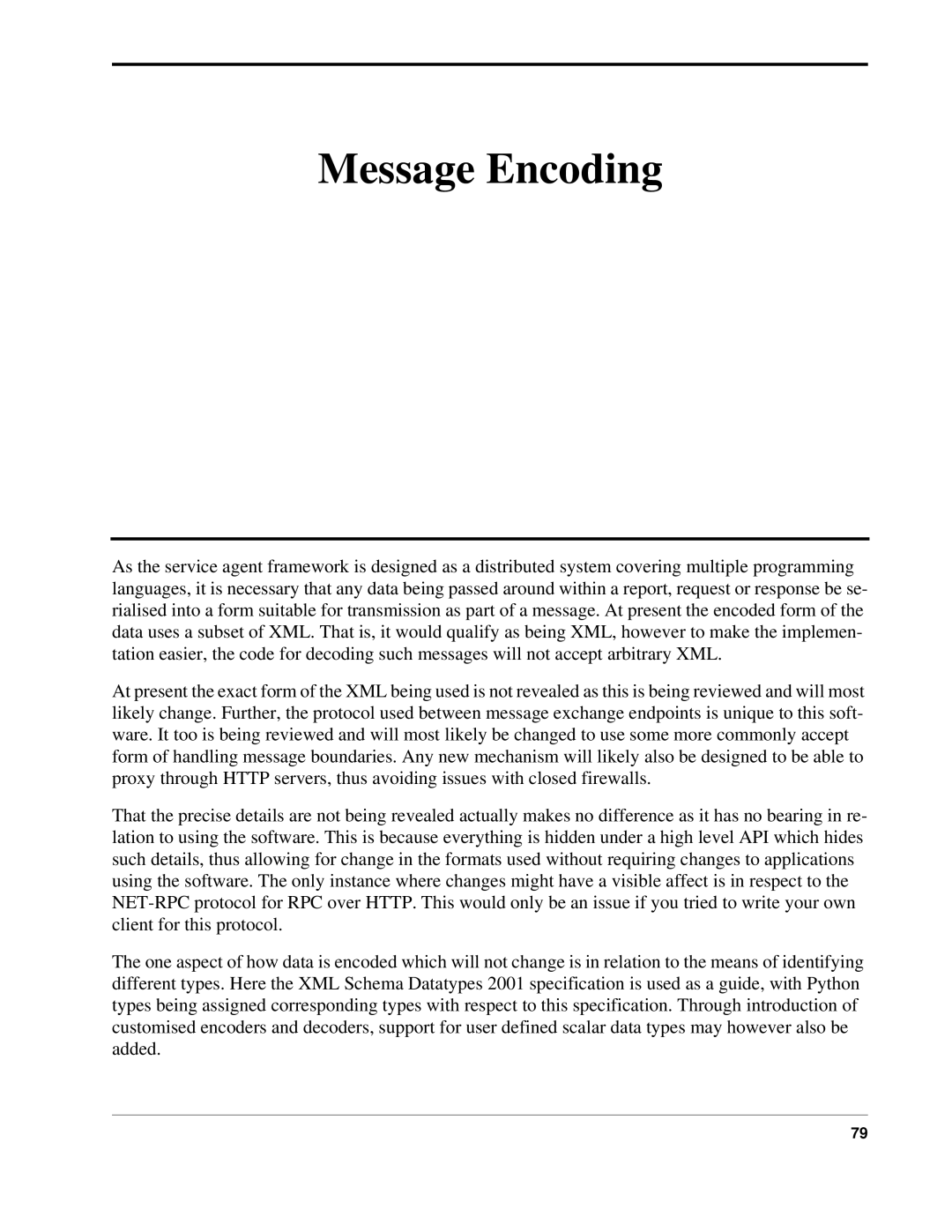
Message Encoding
As the service agent framework is designed as a distributed system covering multiple programming languages, it is necessary that any data being passed around within a report, request or response be se- rialised into a form suitable for transmission as part of a message. At present the encoded form of the data uses a subset of XML. That is, it would qualify as being XML, however to make the implemen- tation easier, the code for decoding such messages will not accept arbitrary XML.
At present the exact form of the XML being used is not revealed as this is being reviewed and will most likely change. Further, the protocol used between message exchange endpoints is unique to this soft- ware. It too is being reviewed and will most likely be changed to use some more commonly accept form of handling message boundaries. Any new mechanism will likely also be designed to be able to proxy through HTTP servers, thus avoiding issues with closed firewalls.
That the precise details are not being revealed actually makes no difference as it has no bearing in re- lation to using the software. This is because everything is hidden under a high level API which hides such details, thus allowing for change in the formats used without requiring changes to applications using the software. The only instance where changes might have a visible affect is in respect to the
The one aspect of how data is encoded which will not change is in relation to the means of identifying different types. Here the XML Schema Datatypes 2001 specification is used as a guide, with Python types being assigned corresponding types with respect to this specification. Through introduction of customised encoders and decoders, support for user defined scalar data types may however also be added.
79
